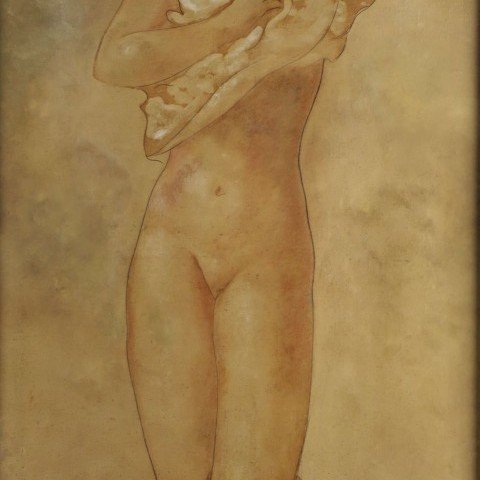Pere Pruna Y Ocerans, also called Pedro Pruna, was born in Barcelona in 1904. One of the most important painters of Spanish figuratism, he was clearly influenced by Balthus and Picasso. His work also reflected European expressionism, especially in regard to religious subject matter. In 1920 he traveled to Paris where he met Picasso and was influenced there by Picasso's period of classicism, and 'the return to order' after WWI.
Thanks to his friendship with the painter Sebastien Sunyer from Malaga, he was able to meet and interact with intellectuals and artists of the French avant-garde, and exhibited at the Percier gallery in Paris in 1922.
In 1928 he won the 2nd prize at the Canegie Institute in Pittsburgh, after which he became internationally famous. The first prize in that exhibition was awarded to André Derain.
He exhibited in Chicago, New York and Amsterdam, and in 1936 and 1938 he exhibited at the Venice Biennale. He made a number of mural paintings and other large-format religious works, preserving his personal style, while painting delicate nudes, experimental works and collages.
His most mature stage was focused almost completely in portraiture, nudes, still lifes and compositions inspired by mythology.
He died in Barcelona in 1977.

